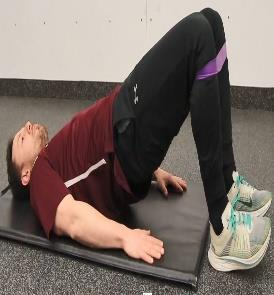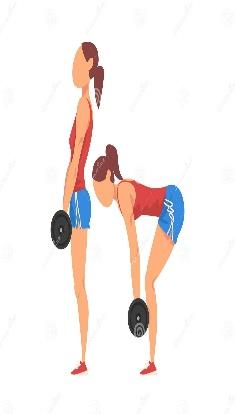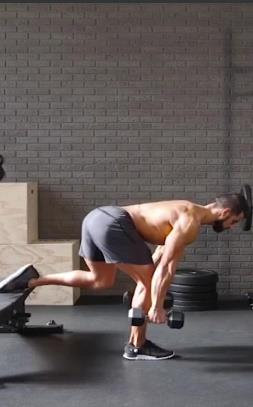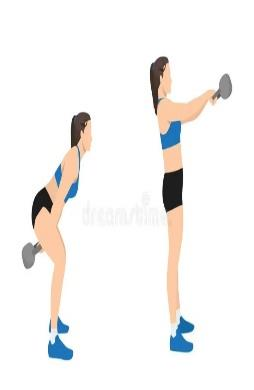Resistance Training Hip-Dominant
1/18
There's no tags or description
Looks like no tags are added yet.
Name | Mastery | Learn | Test | Matching | Spaced |
|---|
No study sessions yet.
19 Terms
Hip Dominant Movements
are those which required movement of flexion/extension around the hip joint, with minimal movement around the knee joint.
Hamstring Muscle Groups
Hip Dominant: Movements in this training target the posterior(back) of the upper leg or ____________.
Hip Bridge
Regression of Resistance Training of Hip Dominant
Hip Bridge
What type of exercise is this?

Single-leg Deadlift
Standard level of Resistance Training of Hip Dominant
Single-leg Deadlift
What type of exercise is this?

Dumbbell Deadlift
Rear Foot Elevated Hip-Hinge
Kettle Ball Swings
Progression level of Resistance Training of Hip Dominant
Regression Level
What level is Hip Bridge?
Standard Level
What level is Single-leg Deadlift?
Progression Level
What level is Dumbbell Deadlift?
Progression Level
What level is Rear Foot Elevated Hip-Hinge?
Progression Level
What level is Kettle Bell Swings?
Dumbbell Deadlift
What type of exercise is this?

Rear Foot Elevated Hip-Hinge
What type of exercise is this?

Kettle Bell Swings
What type of exercise is this?

Hip Bridge
Starting Position
1. Start client lying supine (on their back) with the knees bent and toes elevated/pointing upward
2. Heels should line up under the knees and be placed hip-width distance
3. Arms are placed without bearing weight alongside the body
4. Brace the abdominals and engage the glute muscles
Downward Movement
1. Lower the hips back toward the floor and exhale
Upward Movement
1. Drive through the heels to raise the lower back off the floor while inhaling; coming up to the shoulders without crunching into the cervical spine or overextending the lumbar spine
2. Pause at the top and squeeze your glutes
Single-Leg Deadlift
Starting Position
1. Stand on a single leg with the arms hanging on the side
Downward Movement
1. Bend over at the waist and lift the right heel
2. Simultaneously lift the right arm to create a straight line
3. Maintain a straight line from the ear through the hip, knee, and ankle
4. Hold for one to two seconds before going back to the starting position
Upward Movement
1. You may also opt to drop the arms (instead of reaching overhead) and keep the weight under you (see single
kettlebell and bar)
2. Repeat for the prescribed number of repetition
3. Repeat on the other leg
Dumbbell Deadlift
Starting Position
1. Stand squarely with the arms on the side.
2. Hold a pair of dumbbells with pronated grip.
3. Keep the knees soft so they have a slight bend.
4. Maintain this knee position from the start to finish.
Downward Movement
1. Push the hip and hamstring back as far as possible.
2. Lower the torso until it is parallel on the floor by bending at the hips.
Upward Movement
1. Reverse the movement by pushing the hips forward, squeeze the glutes and return to the starting position.
Rear Foot Elevated Hip-Hinge
Starting Position
Stand tall. Place one foot on top of the bench.
Keep the knee slightly flexed.
Hold a pair of dumbbells or kettlebells on the side of the body.
Maintain this knee position from the start to finish.
Downward Movement
1. Perform the abdominal brace.
2. Keeping all the weight on the right foot, push the hip back as far as possible.
3. Lower the torso until it is parallel on the floor by bending at the hips.
Upward Movement
1. Reverse the movement by pushing the hips forward to return to the starting position.